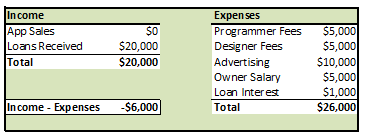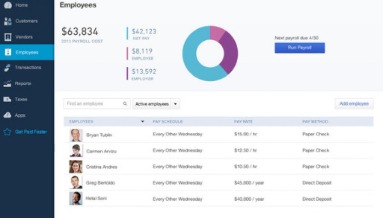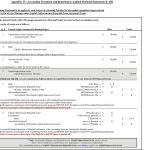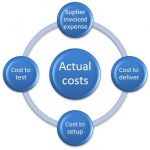
Third, our study contributes to the accounting literature with a discussion of the potential future research trends related to blockchain for accounting. We believe that this study will be a helpful resource for present and future scholars interested in addressing the most meaningful connections between accounting and disruptive applications based on blockchain. Even though blockchain technology is more secure than a traditional database, it is still susceptible to a security breach. In a public network, a group of participants (or participant) with 51% of the computing power may collude to revise transactions in the network. To mitigate of the risk of a “51% attack,” a public network may adopt a different consensus algorithm (e.g., proof-of-stake in lieu of proof-of-work).
Volunteering roles

According to Hoque (2014) and Tranfield et al. (2003), authors should explain the entire review process to facilitate replication. Therefore, we adopt Massaro et al.’s (2016) model to increase the reliability of the representation of the results. The subsequent paragraphs explain the dataset creation, the tools used to implement the analysis and how the open codes were created. Using a quantitative approach, Marrone and Hazelton (2019)’s study explores the link between the terms “technology” and “disruption” in the accounting literature, highlighting the research now dealing with blockchain and the aims of managing it. Consistent with our results, their investigation invites future scholars to identify application cases.
Practical implications
Additionally, blockchain provides opportunities to collect qualitative social and environmental data, which will continue to require assurance in the future. La Torre et al. (2018) argue that blockchain will generate an automatic assurance system for non-financial information that could substantially modify the https://www.accountingcoaching.online/ current assurance paradigm. Therefore, blockchain may help accountants move away “from traditional accounting assumptions, such as monetary unit[s], economic entit[ies] and time periods, leading organisations more towards holistic views of their relations with the society” (McGuigan and Ghio, 2019, p. 800).
Worldwide support and services

Accountants are seen as experts in record keeping, application of complex rules, business logic and standards setting. They have the opportunity to guide and influence how blockchain is embedded and used in the future, and to develop blockchain-led solutions and services. These judgemental elements often require context that is not available to the general public, but instead require knowledge of the business, and with blockchain in place, the auditor will have more time to focus on these questions. Alongside other automation trends such as machine learning, blockchain will lead to more and more transactional-level accounting being done – but not by accountants. Instead, successful accountants will be those that work on assessing the real economic interpretation of blockchain records, marrying the record to economic reality and valuation. For example, blockchain might make the existence of a debtor certain, but its recoverable value and economic worth are still debateable.

Where accounting really stands with blockchain
(2017), “Toward blockchain-based accounting and assurance”, Journal of Information Systems, Vol. Academics, together with practitioners, should work on specifying how these regulatory dimensions need to be developed, what type of disclosures are relevant to cryptocurrencies and how disclosure costs may further impact market uncertainty (Cao et al., 2018). Clarifying the regulatory framework will probably also lead to more ICOs, as initiators will be better prepared and be able to respond to uncertainty in blockchain policy by increasing their voluntary disclosures (Zhang et al., 2021; Gurrea-Martínez and Remolina, 2018). Research on the efficiency and effectiveness of ICOs will be of high interest in the future.
About the authors
- This is in line with the poor theoretical analysis of blockchain in this research area.
- Automation won’t see robots replace accountants, but it will lead to some tedious processes being made things of the past.
- The opportunity of distributed technology and possible applications are applied in different contexts.
- That excitement is reflected in the market as well, with more than 55% of businesses saying that blockchain technology is one of their top-five strategic priorities – up from just 43% in 2018.
- The main advantage of blockchain technology is that once a transaction is approved by the nodes in the network, it cannot be reversed or re-sequenced.
Distributed ledgers may not be attractive or even needed by every company, so there is a real need to ascertain exactly what the up and downsides of implementing blockchain are. As O’Leary (2019) observes, the opportunities for using blockchain may be limited by the desire and ability of all agents in the ecosystem to implement it. Because blockchain eliminates the need to enter and reconcile information in multiple databases, efficiency gains are a key strength. Blockchain also saves time by increasing the speed of transactions, reducing human error and minimising fraud (Kokina et al., 2017; O’Leary, 2017). The use of smart contracts may also improve processes in a range of industries. Smart contracts on the blockchain execute when certain conditions are met without the need for trusted intermediaries to verify the fact (Coyne and McMickle, 2017; Kokina et al., 2017).
It’s clear that technology is changing the way organizations do business across all functions and industries. But there are particular pairings https://www.business-accounting.net/statement-of-comprehensive-income/ of tool and team that carry game-changing potential. Learn how our auditors work with Deloitte COINIA to help address blockchain.
Blockchain could help accountants gain clarity over the available resources and obligations of their organisations, and also free up resources to concentrate on planning and valuation, rather than recordkeeping. In the original definition, blockchain is defined as a dispersed ledger of chained and consecutive cryptographic blocks, and each block is registered on peer to peer networks (McAliney and Ang, 2019). The nodes also work in the same direction and are validated by the network’s other components (Rien Agustin and Susilowati, 2019). Additionally, Arnaboldi et al.’s (2017) contribution stimulates the conversation between academics and accountants considering business processes and digital interactions identifying, for example, the role of big data information and decision-making processes.
This risk highlights the need for independent external auditors to approve transactions before the contract enters the blockchain. In short, the ability of blockchain to store records makes it a target for potential cyberattacks. Therefore, to ensure the security of information in a blockchain, there is a need to implement internal and cybersecurity controls that consider privacy preservation issues (Chohan, 2017; Coyne and McMickle, 2017; O’Leary, 2017).

The analysis shows that in 20% of the cases, the in-depth analyses concern accounting. This is because, in addition to the two counterparties, there is a third-party intermediary who creates and records what happens. what are accounts uncollectible example The required criteria call for independence and reliability, which can be solved by technology (Alarcon and Ng, 2018). Finally, after 2016, researchers focus mainly on blockchain techniques and smart contracts.
Besides, as Stanley (2001) specifies, the reduction in the study sample requires the identification of analysis nodes that aim to synthesize the knowledge flow characteristics. The bibliometrix R package and biblioshiny app, widely used in the literature by several studies (Secundo et al., 2020), are used to analyze the bibliographic data for the first coding group (Aria and Cuccurullo, 2017). Finally, for coding analysis, we use the Deedose web application particularly suitable for ensuring that the inter-rater reliability (IRR) links with the degree of consistency in how the code system is applied (Talanquer, 2014). In the next subsection, we provide an analytical description of the coding framework adopted.
We are aware that the peer-review process is accepted as a proxy for the quality of published works, especially with respect to academic journal articles (Hart, 1999; Massaro et al., 2015). However, we believe that, given the speed of new knowledge development, especially in the areas of disruptive technologies like blockchain, papers from SSRN added an important contribution to the topics identified. Finally, the validity of the results can only be considered at the time of the analysis, as literature reviews “are not a panacea” (Massaro et al., 2015, p. 546).
Understanding the elements that influence people’s attitudes toward adopting and integrating blockchain into accounting education is critical for successful implementation. Grani and Maranguni (2019) recognize TAM as a conceptual framework for comprehending individuals’ acceptance and adoption of new technologies. TAM posits that ease of use and perceived usefulness are primary determinants of users’ attitudes and intentions toward adopting a specific technology (Davis, 1989). The following subsections present the study’s hypotheses, illustrated in Fig. Qasim and Kharbat (2020) and Singh et al. (2023) examined blockchain usage in accounting and its potential impact on the profession. These studies emphasized the importance of incorporating blockchain into accounting education but did not specifically explore intentions for adopting and integrating blockchain into accounting education.
